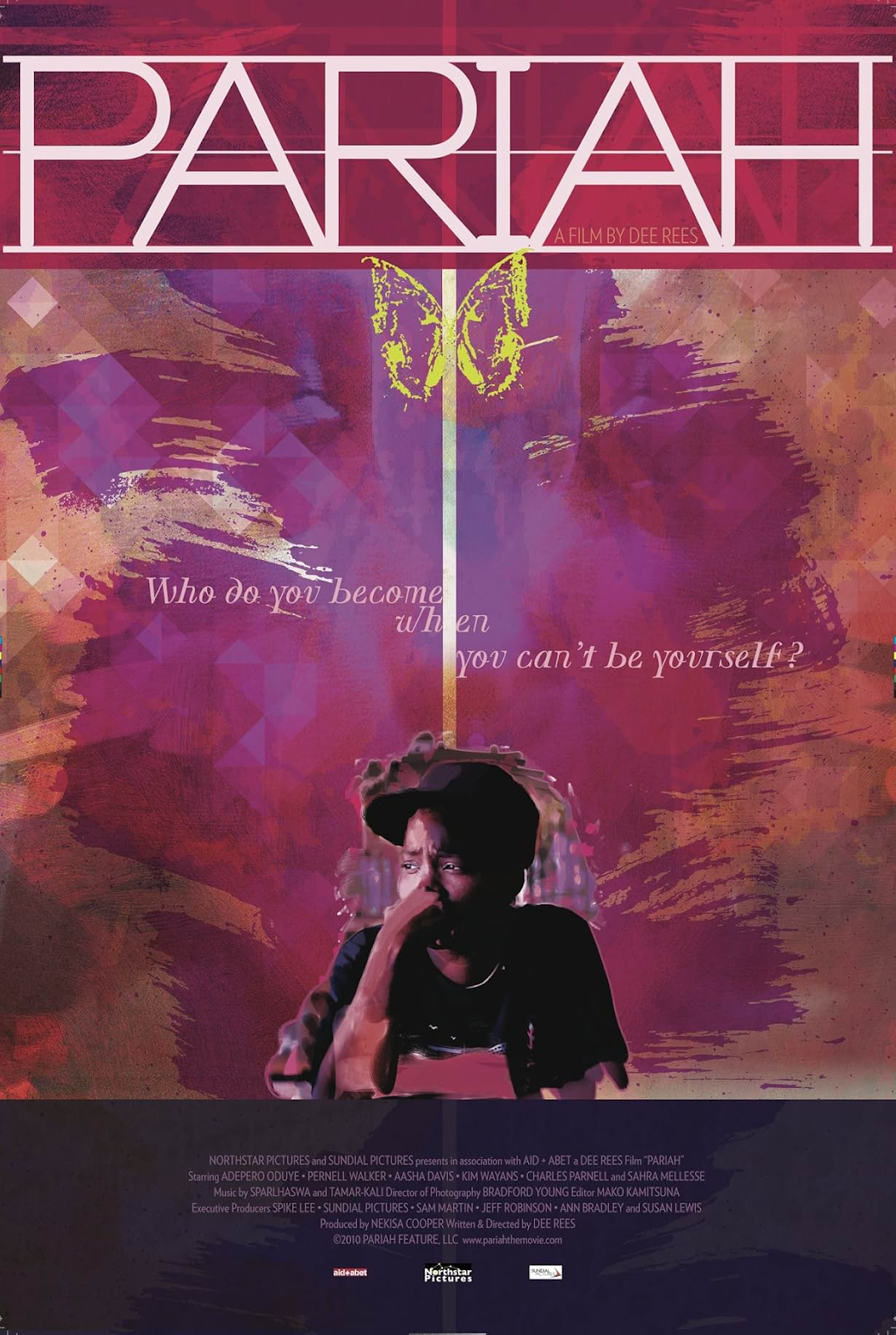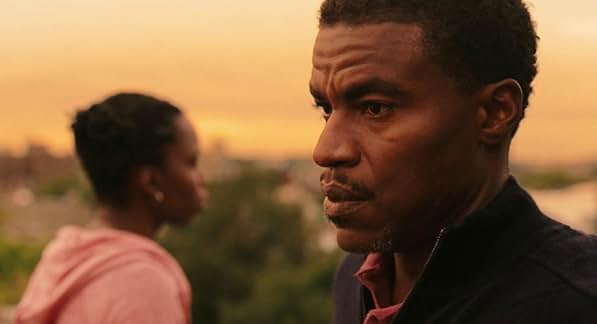Pariah: Sexuality and Adolescence
Alike (Adepero Oduye) is a 17-year-old kid from Brooklyn,
New York who quietly embraces her lesbianism in Dee Rees’ 2011 film Pariah. It’s
a personal and vulnerable dive into the life of a black teenager who fluctuates
between performances of gender and sexuality in order to keep her secret from
her family, while also exploring what sexuality means for her as she seeks out
her first lover. Her plans are complicated by developing feelings for Bina
(Aasha Davis), and her mother’s increasing frustration with her daughter’s
“tomboy” nature. Through heartbreak and abandonment, Alike chooses herself
instead of running from who she really is.
Arguably the most prominent visual aspect of this film is
that of gender performance and how it coincides with sexuality – particularly
in black communities in New York. The film begins with Alike and Laura (Pernell
Walker) in a club, adorned in masculine clothing. Laura, who’s much more
comfortable in her skin, dances with other women, while Alike sits back until
eventually making Laura and her leave. On the way home, Alike sheds her
masculine suit and dons one that is more feminine – visually represented by a
pair of small, gold, hooped earrings. We see the opposite of this
transformation when Alike goes to school and changes from her more feminine,
mother-approved wardrobe to articles of masculine clothing in a bathroom stall.
While it’s made obvious that Alike is incredibly uncomfortable sporting
anything ultra-feminine (the scene of her mother forcing her to wear a pink
blouse to church). However, Alike’s body language suggests that even when she
emulates Laura’s transgressive way of dressing, she is uncomfortable in her
skin.
In both cases, she’s putting on these different gender
performances for the sake of other people. “This work finds that black lesbians
in New York use gender display to structure social interactions, and the order
of these social interactions maintains social control in the community. In
order to attract a person with a certain gendered style, one must possess a
complementary gender display,” writes Mignon Moore, in her study examining the
gender presentations of black lesbian communities in New York (129). While
Moore goes on to explain that these lesbians feel these norms grant a certain
agency in how they choose to present their gender, I feel like Alike doesn’t
quite feel the same level of liberation considered her transgressive attire.
Being able to dress in a masculine manner, however, does offer a way in which
to express her sexuality without having to be fully out of the closet. While
there is a freeing element to stepping out of the closet in certain circles, I
think Alike’s naivety has her mirroring how Laura presents herself, without
questioning what gender presentation feels most authentic and liberating to
her. At the end of the film, after coming out and losing her mother, Alike
chooses herself. Visually we see this in her body language – as in she’s happy
and excited about her future – but also through the way she dresses, with a
more ambiguous presentation in which she appears more comfortable.
Another interesting visual representation of queerness is
the depiction of the different stages of being in and out of the closet. The
characters of Laura, Alike, and Bina represent being out, closeted, and in
denial. Laura represents someone who has come and is comfortable in her own
skin. Laura knows who she is, and though she lost her relationship with her
mother after coming out, she isn’t ashamed of herself. Even though Laura and
Alike are close in age, Laura has a mentor-like space in Alike’s life, in which
Alike seeks her out for advice and help regarding her own lesbianism. On the
opposite side of Laura is Bina. She harbors an interest in Alike. She sees the
queerness that Alike exudes at school, and she’s curious. However, after she
and Alike hook up, she completely shuts down and claims “I’m not gay gay.”
This could give the impression that Bina tried it and just simply didn’t like
it, but a scene in the scene in which she dodges the affections of a boy
signifies something else. Bina represents someone who has discovered their
queerness but hasn’t gotten to the stage in which she’s comfortable with the
idea that she is queer. In between Laura and Bina, is Alike. She has accepted
her identity as a lesbian, but for most of the film, she’s in the closet. She’s
in this liminal space where, at least in my experience, many queer people exist
wherein she’s closeted but has found a way to be open about her sexuality in
other circles. Eventually, we see Alike come out fully, and while it’s painful
and traumatic, she ends the film in a different stage in which she is both
accepting and free with her sexuality.
Yet another portrayal in Pariah that is
representative of many queer people’s experiences is that of family. Alike has
different relationships with each member of her family. She has a very typical
bond with her younger sister, Sharonda (Sahra Mellesse), in which they argue
and throw barbs at each other. While Alike is never shown to have come out to
her sister, it’s clear that Sharonda knows just from observing her sister and
catching her in telling situations (like, for example, when she catches Alike
wearing a strap-on). Despite her little sister's urge to tattle on Alike and to
make her life generally more difficult, Sharonda is very loyal to Alike, which
is not only shown through Sharonda never divulging Alike’s secret but also in
the scene in which Sharonda seeks out the comfort in her big sister when things
get heated at home. Despite their difference, it’s Alike’s side that Sharonda
takes when Alike is forced to leave home. As for her, father, Arthur (Charles
Parnell), have a very close bond, wherein much love flows between them. Arthur
is initially against the idea of his daughter being a lesbian, but by the end
of the film, he challenges his views embraces his daughter, and makes sure she
knows that he still loves and supports her.
Alike’s mother, Audrey (Kim Wayans), is where things get
complicated. Throughout the entire story, Alike and her mother butt heads, as
Audrey desperately tries to get her daughter to be someone she’s not. While
Alike’s goal is to explore herself, Audrey’s goal is to stint the growth of
that exploration. It isn’t made clear until the coming out scene (in which
Audrey throws slurs at her daughter and hits her) that she suspects Alike is a
lesbian. Despite Audrey’s cruelty, Alike tries to bend the bridge with her
mother, but Audrey doesn’t reciprocate these efforts. Instead, she says, “I’ll
be praying for you” in response to Alike’s “I love you.” The relationship
between the two is tragic, and showcases a truth many queer – especially those
in unaccepting households – come to learn: that sometimes love isn’t
unconditional. Your family and the world will teach the message that family is
unconditional. But when you’re queer, you have to come to terms with the
possibility that your family's love is entirely conditional, and who you are is
one of those conditions, and it hurts.
Overall, this film does many things well, and it feels very
grounded in reality. I’d wager that the semi-autobiographical nature of the
film is the reason for that. It realistically weaves pain and hope in a way
that doesn’t follow the pattern of tragedy-filled queer films that came before
it. Not only does it represent queerness in a positive and grounded light, but
it also represents blackness and queerness and those two intersect. Not much
room is made for more queer people in the mainstream, even today, there’s even
less spotlight reserved for black queer people. “My assumption was that people
of color just weren’t making enough films. But that was dead wrong. Through the
better part of the last decade I’ve been working on the selection committees of
larger, industry-based film festivals in the United States,” says Roya Rastegar
at a roundtable discussion of Pariah in A Journal of Lesbian and Gay Studies.
“I very quickly learned that, actually, people of color, black women, queer
women of color are making lots of films. The problem is that these films aren’t
recognized as valuable, or their value isn’t legible to critics, curators, and
distributors” (430). Pariah is an example of just how valuable these
films are, and how valuable black and queer creators are. Voices like Dee Rees
deserve to be heard, and not overshadowed by a slew of white voices who don’t
make room for anyone else at the table. So many queer films feature white
people in the leading role, and I think it’s vital that black and queer artists
have equal opportunity to represent their community and tell their stories to
the world.
Works Cited
Pariah. Directed by Dee
Rees, Focus Features, 2011.
Keeling, Kara,
et al. “Pariah and Black Independent Cinema Today:
A Roundtable Discussion.” A Journal of Lesbians and Gay Studies,
vol. 21, no 2-3, edited by Mel Y Chen and Dana Luciano, Duke University Press,
2015, pp. 423-439.
Moore, Mignon R.
“Lipstick or Timberlands? Meanings of Gender Presentation
in Black Lesbian Communities.” Signs, vol. 32, no. 1, University of Chicago
Press, 2006, pp. 113-139.







Comments
Post a Comment